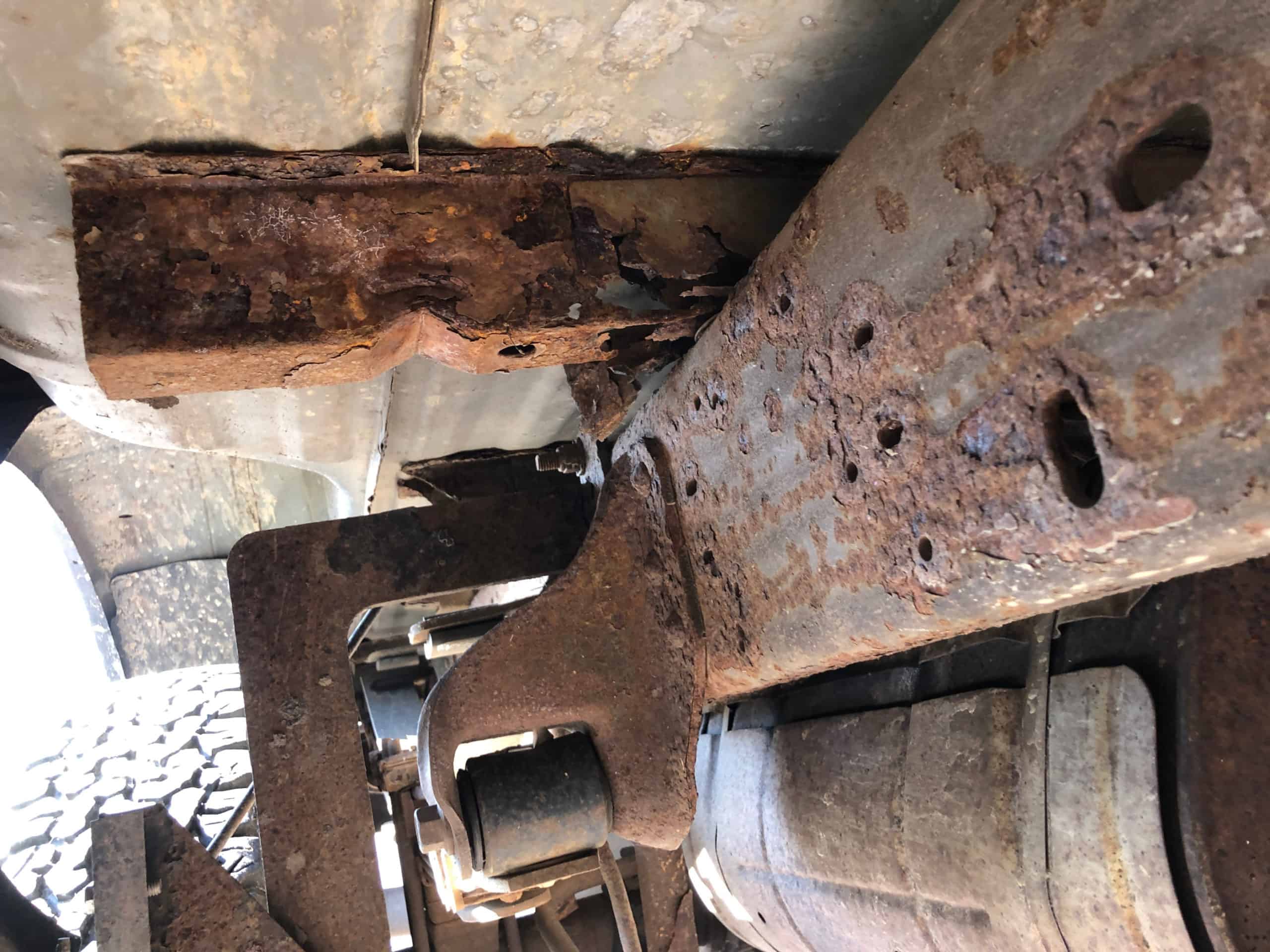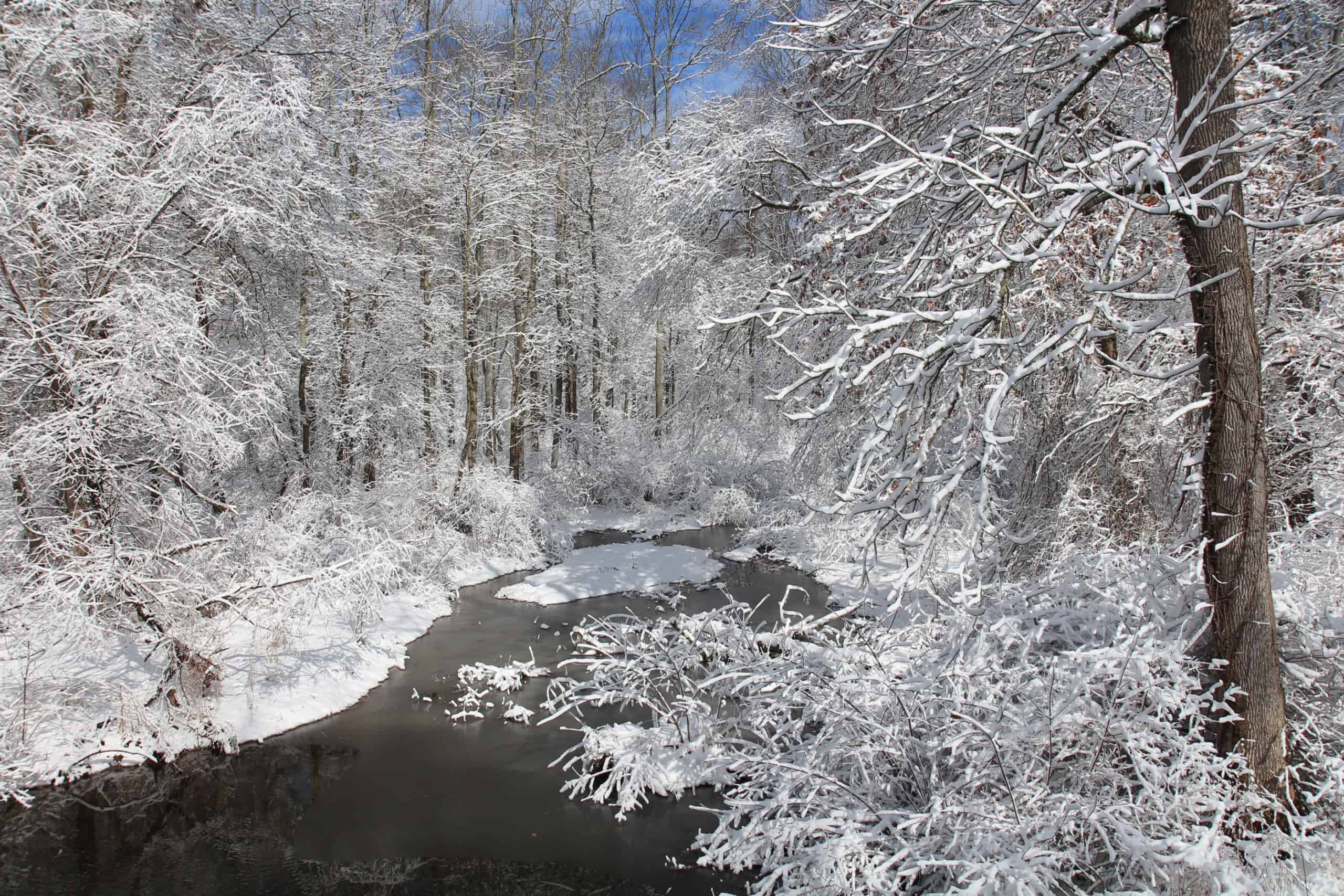Crow’s Nest Pet Peeve (reprise): Road Salt, or Rust Never Sleeps
By Daniel Barringer, Preserve, Manager.
Since snow is forecast today, and since road salt is used heavily around our region to help clear roads of snow and ice, it seems like this is a good time to express my concern about salt. It has been just over a decade since I last ranted about road salt.
My concern is two-fold: one is for the effect it has in rusting cars prematurely, and also about the effect on water quality in our streams.
As someone who has a couple “classic” (read: old) cars, salt is a constant enemy. If you plan to keep your car less than ten years, then it may be no big deal to you; it will be someone else’s problem. If however you have a car you’d like to keep, salt combined with water and air, will cause the metal to oxidize sooner than you’d prefer. After 14 years our beloved preserve work truck (frame pictured below) succumbed to the “tin worm.” The frame and body succumbed before the mechanicals, which are also more economically repairable than rusted metal. We’re hard on our equipment; our trucks are used to plow, tow, haul heavy loads, and are used on a lot of short trips on and off-road at the preserve, with multiple drivers. We also take good care of the truck’s maintenance, but road salt doesn’t care. Imagine the material and energy cost embedded in the manufacture of a car and you can understand the waste of losing its use prematurely.

Photo: Daniel Barringer
Snow and freezing rain are forecast Sunday night into Monday morning, yet by Friday afternoon local highways had already been brined. How much of that salt will still be on the road when it can do some good, and how much will have already dispersed into the environment?
Salt that becomes airborne in droplets sprayed from cars can damage roadside plants. And everything on the roads eventually washes downhill into our streams, where salt can make the water quality inhospitable for wildlife. Our friends at Stroud Water Research Center recently wrote an article about testing conductivity in streams to measure salt concentrations; some streams were as salty as seawater, and some remained salty year round, long after salt season had ended.
In other parts of the country you see highway signs warning drivers, “Watershed Area — Reduced Salt in Use” to protect drinking water supplies. Hmm, how come we don’t see that around here?
I’m not saying that we can do entirely without road salt (though there are plenty of snowy places that do) but that we as a society are using too much, to support one activity, without paying attention to how that fits into the bigger picture.
Remember that we protect water quality in part by protecting the land around it, managing our lands to prevent soil erosion, keep nutrients from washing off the land into the water, and shading our streams with riparian buffers to support the wildlife that naturally occurs here. Salt washing off roads impairs our ability to protect the quality of these streams, and has a real economic cost in the form of rusted vehicles.

Photo: Daniel Barringer
